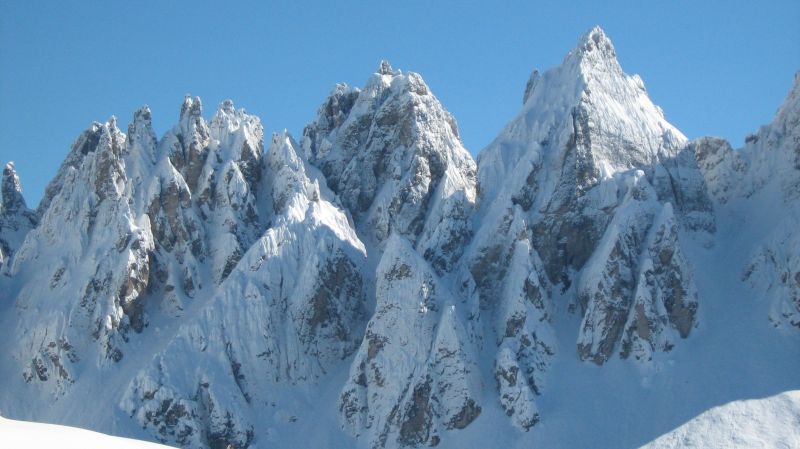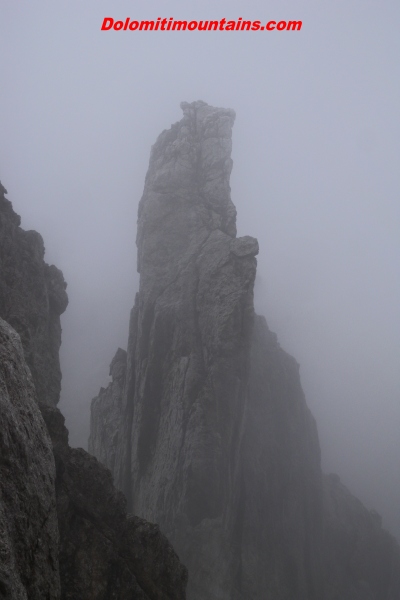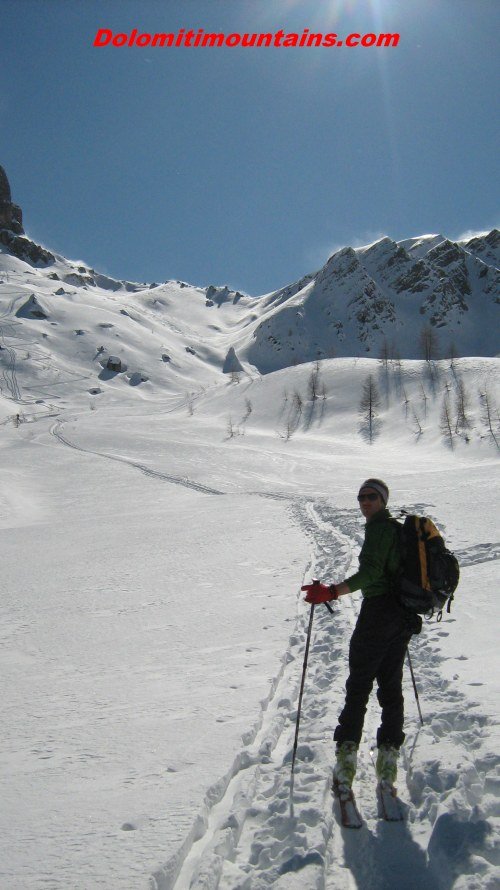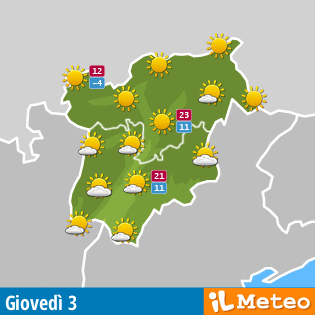The Dolomites Mountains
Dolomites Mountains - Nature's Masterpiece
 |
| Italian |

The Dolomites Mountains with their unparalleled beauty and unique form, stands out as the most captivating mountains in the Alpine chain. These distinctive characteristics have earned them recognition and admiration worldwide, aptly nicknamed the "Pale Mountains." The Dolomites are an enchanting realm where time flows gently, only to surge dramatically in the breathtaking vistas that showcase a spectacular natural display of rocks, forests, and meadows throughout the day, creating a well-preserved natural paradise.
Dolomites Mountains Transformative Beauty at Dawn and Dusk
The nickname "Pale Mountains" perfectly captures their essence. The Dolomites undergo a magical transformation at dawn and dusk. The pale limestone formations turn pink as the light fades, especially during the colder months, becoming a vibrant red that contrasts beautifully with the blue sky and white clouds.
Their sensitivity to seasonal changes always offers a new, captivating light. The sudden change in light after mid-August storms subtly introduces the hint of autumn into summer landscapes. The splendid yellowing of vast beech forests enriches the dark tones of the overhanging "crode." Strips of pure indigo grace the twilight skies with the first frosts of November. Then, as if by magic, snow radically transforms the landscape with vast stretches of white, where the unmistakable profiles of the main peaks rise: Antelao, Pelmo, Spalti di Toro, Tre Cime di Lavaredo, Marmolada, Sorapiss, Sciliar, Civetta, Cristallo, Sassolungo, Vajolet Towers, Tofane, Schiara Group, and many others.
Geological Marvels
Whether we describe them as individual mountains or groups of peaks, the charm of the Dolomites mountains remains unchanged. The imposing walls exhibit striations and rock thicknesses that reveal their geology, expressed in various forms: towers, pinnacles, and spires that suddenly emerge from the high-altitude scree, where even dwarf pine struggles to survive, leaving moss and lichen to thrive. The peaks crown the horizons almost as if to halt the wind, above the slopes of splendid forests that open into internal valleys leading to inhabited areas.
Human Settlements and Natural Harmony
Human settlements are widespread, with numerous villages primarily located in five Italian provinces: Belluno, Bolzano, Trento, and the Carnic extension of the Friulian Dolomites in Udine. The Pale Mountains also stretch into southern Austria, reaching the city of Lienz.
Inhabited for over eight thousand years, the Dolomites have gained increasing fame over the last 150 years, largely due to the burgeoning interest in mountaineering. The first climbs to conquer the peaks introduced the stunning beauty of the valleys and summits to the public.
Today, mountain sports activities are diverse, from trekking and climbing to various forms of skiing and hiking the Alte Vie.
The pristine environment and the return to forestry practices and mountain agriculture offer visitors a unique spectacle of flora and fauna, including deer, roe deer, chamois, and other ungulates. The bear has also made a return from nearby Slovenia. The spread of birds, from small passerines to forest galliformes and high-altitude raptors, adds to the ecological richness.
The Environment of the Dolomites Mountains
Vegetation varies based on altitude and the exposure of slopes. Forests are dominated by conifers such as white and red fir, pine, and larch, perfectly integrated with beech. Lower altitudes feature birch, hornbeam, and manna ash. The rich undergrowth fosters the growth of numerous mushroom species, which are a staple in Dolomite cuisine, adding a distinctive flavor to many dishes.
The Climate in the Dolomites Mountains
The climate in the Dolomites mountains is typically alpine, with short, cool summers, rainy springs from the thaw onwards, dry autumns, and sometimes long, snowy winters.
The Dolomites mountains act as a weather barrier moving from south to north, resulting in periodic instability due to the west-east flow of bad weather crossing the Italian peninsula.
January temperatures often drop below zero, with variations depending on altitude and sun exposure. Villages frequently experience mornings at -15°, and peaks can record temperatures below -20° on windy nights. Perennial snows start from 2300 meters on north-facing slopes to 2800 meters on south-facing ones.
Dolomites Mountains Seasons
What makes the Dolomites Mountains truly magical is their response to seasonal changes. At dawn and dusk, the pale limestone formations transform, taking on pink hues that deepen into a vibrant red against the blue sky and white clouds during the colder months.
The shifts in light after mid-August storms subtly herald the coming of autumn, while the vast beech forests turn a magnificent yellow, contrasting beautifully with the dark rock faces above.
Twilight skies in November feature strips of pure indigo, and the arrival of snow creates an awe-inspiring winter wonderland.
Recommended Experiences in the Dolomites
No written or photographic description can entirely capture the charm, sensations, and aromas that a hike along the trails of the Dolomites can offer.
You are invited to experience:
The Warmth of Alpine Huts: Enjoy the convivial atmosphere and camaraderie in the cozy alpine huts scattered throughout the mountains.
Unique Mountain Pastures: Discover the distinctiveness of mountain pastures, where traditional practices are still alive.
Enchanting Cascading Streams: Let the sound of cascading streams soothe your soul as you explore the verdant landscapes.
Breathtaking Landscapes: Marvel at the ever-changing light and shadow play over the rugged terrain, offering new perspectives at every turn.
Tranquil High Paths: Find peace in the silence of the high paths, where the serenity and grandeur of the Dolomites become most apparent.
The Essence of the Dolomites Mountains
It is precisely in the silence and peace of these mountains that one can find the true essence of the Dolomites. This unique region, with its stunning natural beauty and rich seasonal variations, offers an experience that is deeply captivating and profoundly moving. Words and pictures can only do so much; it's the personal encounter with these majestic mountains that leaves a lasting impression.
- Dolomites Restaurants
- Dolomites Restaurants a page to help you find the most suitable to your palate restaurants.
- Hotels in Dolomites
- Hotels in Dolomites to find great deals and saving.
- Bed and Breakfast
- Bed and Breakfast in Dolomites.
- Dolomites Hut
- Dolomites Hut is the page where you can find the right refuge on your track.
- Farmhouse
- Farmhouse in Dolomites offers ospitality and good food.
- Dolomites Map
- Where are the Dolomites? Dolomites Map gives you an answer at a glance.
- Dolomiti Mountains Gallery
- The Dolomiti Mountains Gallery -Photos and videos of dolomiti mountains, towns and peculiar environments.
- Mountain Culture
- Mountain Culture is a combination that's accompanied by millenniums. It's a delicate balance between human needs and the will to change the land.
- Dolomites Towns
- Some of the most imortants and famous Dolomites Towns.
- Dolomiti Unesco
- Here the resaons of Dolomiti Unesco and its areas.
- Unesco Sites
- Unesco Sites of Dolomites are nine on a very large area.
- Geology of Dolomites
- The history and Geology of Dolomites are part of a great heritage.
- Dolomites Climbing
- Dolomites Climbing is a place and an idea of climbing, and climbers know this.
- Mountain Climbing
- Mountain Climbing is an art and an unique experience.
- Alpine Guides
- The early Alpine Guides on Dolomites, explorers and pioneers.
- The Snowshoes
- The Snowshoes are a new sport fashon in Dolomites.
- Ski Area
- Ski Area of Dolomiti Supeski means twelve exciting and beautiful places to spend your days.
- Dolomites Climate
- Dolomites Climate gets rilevant informations on climate and weather about Dolomites area.
- Cycling Dolomites
- Cycling Dolomites offers the opportunity to cycling under some of the moust beautiful peaks of the Dolomites.
- Alto Adige
- Alto Adige is more than a region but a lifetyle made by culture and mountains.
- Dolomiti Bellunesi National Park
- The Dolomiti Bellunesi National Park is a very interesting area for its large amount of flora.
- Alta Via Number One
- Alta Via Number One the classic route in the Dolomites Val Pusteria in Belluno.
- Dolomites Food
- The Dolomites Food is not just a matter of tradition but takes the tastes and smells of the wealth of its populations.
- Dolomiti Links
- Links of Dolomiti Mountains are an easy way to find friends.
- Dolomitimountains Site Map
- Dolomitimountains Site Map a guide to explore the Dolomites.
- Contact Us
- please use our contact us page to send any questions or comments.
- Disclaimer
- Disclaimer for Dolomitimountains.com
- Privacy and Policy
- Privacy and Policy for Dolomitimountains.com
- The Bob
- The Bob is a sport with a high adrenaline content.



